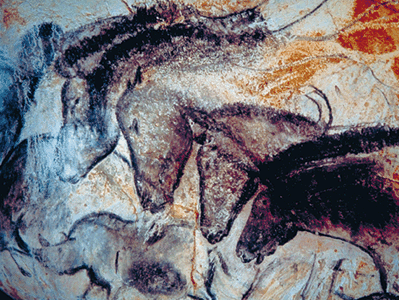New Sites Added to Heritage List
June 26, 2014
An ancient Inca road in South America, a French cave with prehistoric art, and mysterious stone spheres in Costa Rica are among the 30 new important sites just added to the World Heritage List. The list is an international registry of sites with cultural and natural significance. Some sites are listed because of their unusual scenery and wildlife. Others are included because of their importance as part of our cultural heritage. Some areas possess both natural and cultural importance. The list, established in 1972, is maintained by the United Nations Educational, Scientific, and Cultural Organization’s (UNESCO) World Heritage Committee. The committee also works to preserve the sites. With the new additions, the list now includes 1,007 sites around the world.
The United States gained its 22nd site, the monumental earthenworks of Poverty Point, Louisiana. The complex comprises five mounds, six concentric semi-elliptical ridges separated by shallow depressions, and a central plaza. The complex was created and used for residential and ceremonial purposes by a society of hunter-gatherers from 3,700 to 3,100 B.C. Other Heritage List sites in the United States include Independence Hall in Philadephia; Grand Canyon National Park in Arizona; Cahokia Mounds State Historical Site in Illinois; and the Statue of Liberty in New York City.
In addition to having “outstanding universal value,” sites must meet at least 1 of 10 criteria. These include representing “a masterpiece of human creative genius”; containing “superlative natural phenomena or areas of exceptional natural beauty and aesthetic importance”; and containing “the most important and significant natural habitats for in-situ conservation of biological diversity.”

Chauvet Cave in southern France was added to the World Heritage List because of its spectacular examples of art by prehistoric people. (Center for Information & Documentation (DRAC Rhone-Alpes))
The latest additions to the World Heritage List include:
- Qhapac Nan, a 1,865-mile (3,000-kilometer) network of roads that connected all parts of the Incas‘ Andes Mountain empire;
- Grotte Chauvet in France, which holds the earliest known and best preserved figurative drawings in the world, dating back as early as 32,000 B.C.;
- The Stone Spheres of the Diquis Delta in Costa Rica, known for their perfection, size, and density, “whose meaning, use and production remain largely a mystery.” The spheres are located on four archaeological sites dating from A.D. 500 to 1500 that also contain artificial mounds, paved areas, and burial sites.
- The Okavango Delta, a vast wetland in Botswana, that is home to some of the world’s most endangered species of large mammals, including cheetahs, white rhinoceroses, black rhinoceroses, African wild dogs, and lions.
- Stevns Klint, a site in Denmark that contains geologic and fossil evidence of the impact of the Chicxulub meteorite that crashed into the ocean off the coast of Mexico’s Yucatan Peninsula about 65 million years ago. The catastrophic impact is believed to have caused the extinction of some 50 percent of all species on Earth, including the last of the dinosaurs;
- The Mount Hamiguitan Range Wildlife Sanctuary in the Philippines, a mountain ridge that provides habitat for a range of plant and animal species, some of which are critically endangered.
To see all sites chosen for the World Heritage List in 2014, go to
http://whc.unesco.org/en/newproperties/date=2014&mode=list


